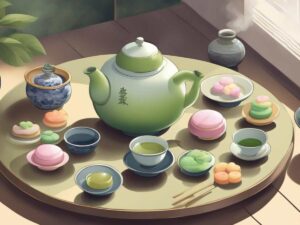If you’re fortunate enough to be an honored guest of traditional Japanese hospitality, the sweet dry taste and rich umami of sake, saké, or saki (酒) won’t be far away.
When your host serves you your drink it’s not uncommon to be presented with a small wooden box.
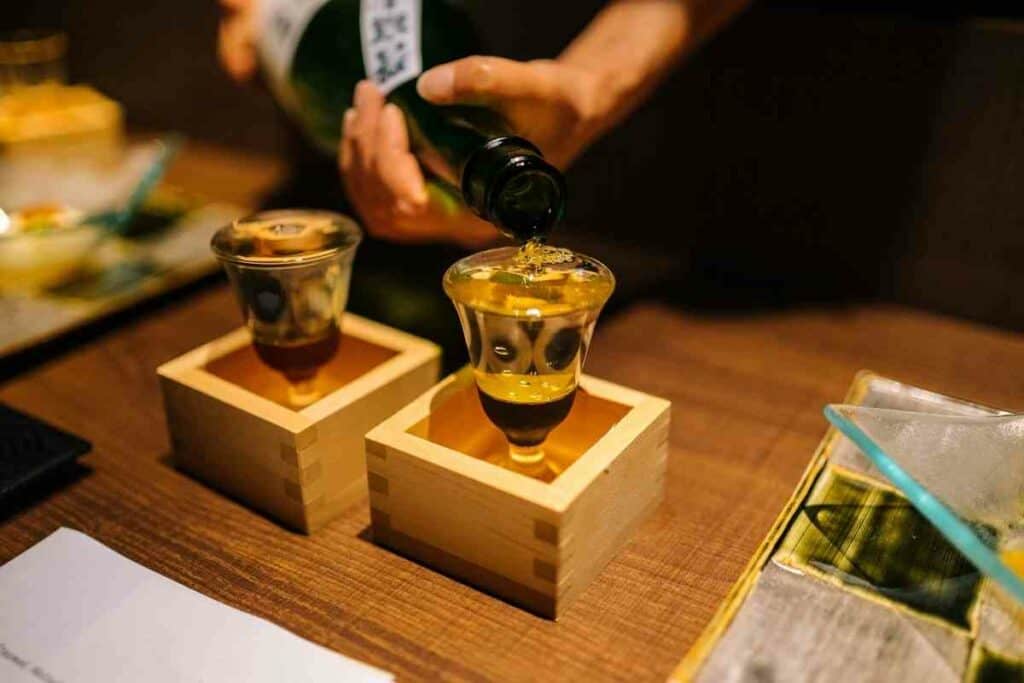
If you’re wondering why is sake drunk from a wooden box, this article will explain this intriguing sake-drinking custom that has been practiced in Japan for over 2,500 years.
Table of Contents
Why is sake drunk from a wooden box?
Sake is traditionally served in a small wooden box called a “masu” (升), sometimes with a pinch of salt on the corner.
The box is simply but impeccably crafted from cedarwood with dovetail joints at the corners.
The box is through to have originally been lidded and used to measure rice rations (a meal’s worth), a remnant of Japans feudal past.
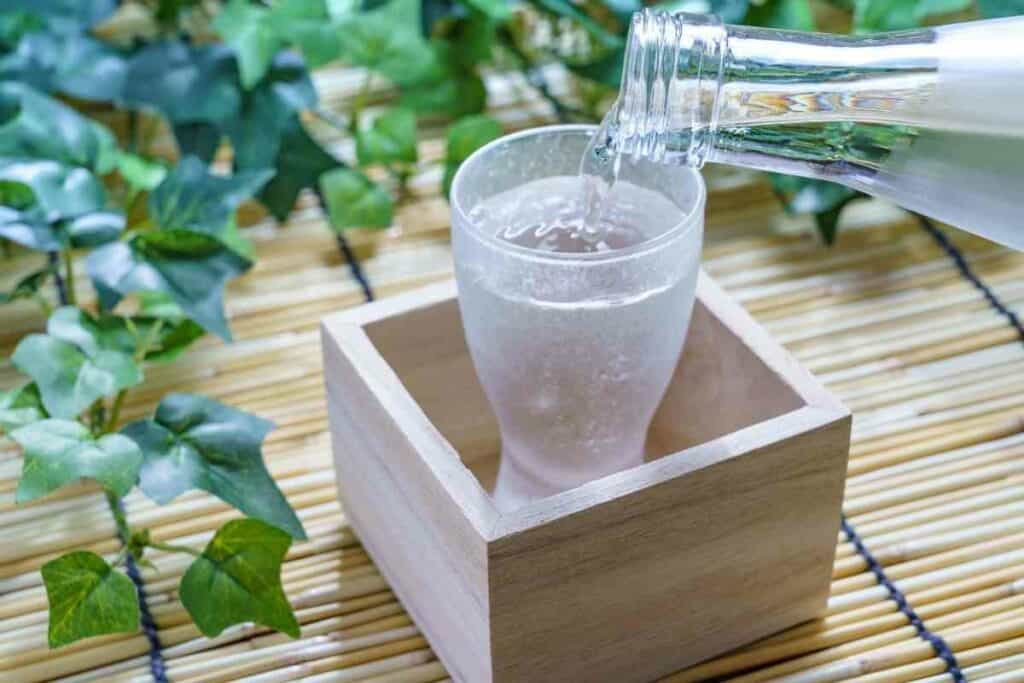
They were then adopted for tavern drinking.
People have been using the masu for thousands of years, though in contemporary times, drinks from glass or even serving the sake in a glass in the masu has become more common.
[lasso type=”table” id=”62″ link_id=”7543″]
A masu of the correct size and proportions can hold 5.5 ounces (180 milliliters)
Initially – These small boxes were a measure of about one meal’s worth. The volume of liquid these masu hold is 180 milliliters (around 5.5 ounces).
Drinking from a masu is part of the rituals and celebrations in Japanese culture
Sake has been brewed in the islands of Japan for at least 600 years, and it is likely that the brewing of this distinctive, dry rice wine goes back much further as it is described in ancient Japanese history.
The serving and drinking of sake from a masu is associated with special occasions or the highest standards of hospitality.
This clear, cloudy, or strong drink also has ancient ritualistic connotations having been used in Shintoism for oblations.
Booking.comThe masu is the perfect partner to the rich flavour of traditionally brewed sake
Until recently, the small masu box was considered the way to drink sake.
This special wooden cup is even made of sap-rich woods like cedar (Sugi), or hinoki that can infuse the beverage with flavor and have antimicrobial properties that keep the drink fresh.
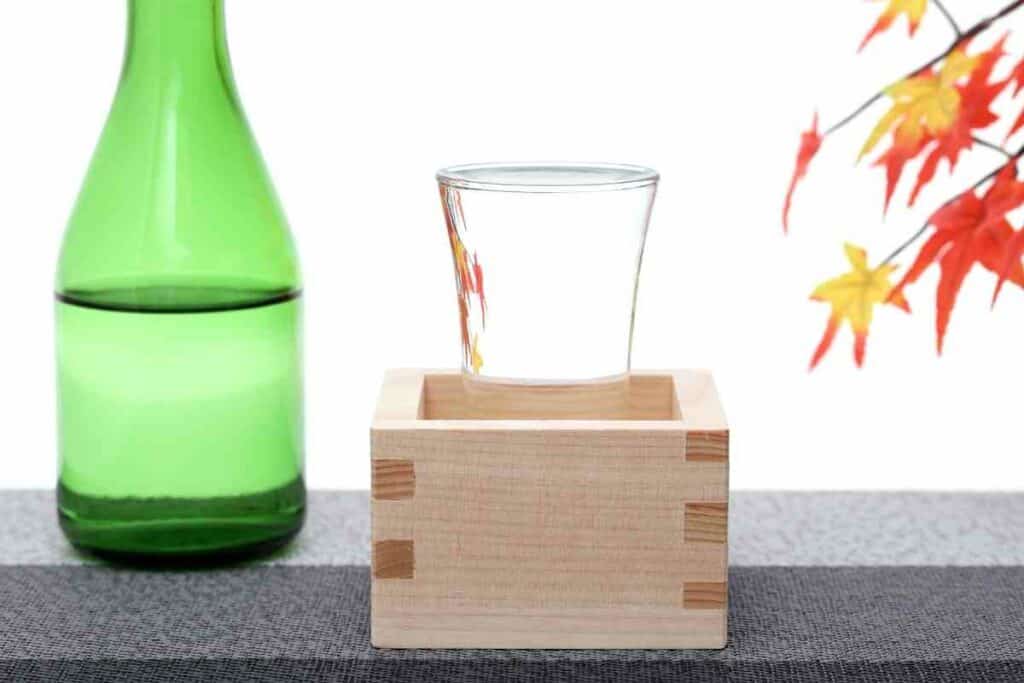
Drinking sake with a masu was routine in the days when sake was fermented in wooden barrels and had a stronger and more pungent flavor than the mainstream varieties of today.
However, you can still enjoy the masu experience in one of two ways.
Read also – Japanese sake sets
How to drink sake from a wooden box
Sake is still enjoyed in a masu, but more for its pleasing aesthetic than the flavor.
The modern brewing of sake means that pungent wood could overpower it.
In Fact – Many Japanese do the unthinkable and enjoy their sake in a ceramic or even plastic-lined masu!
When do you enjoy sake in a masu?
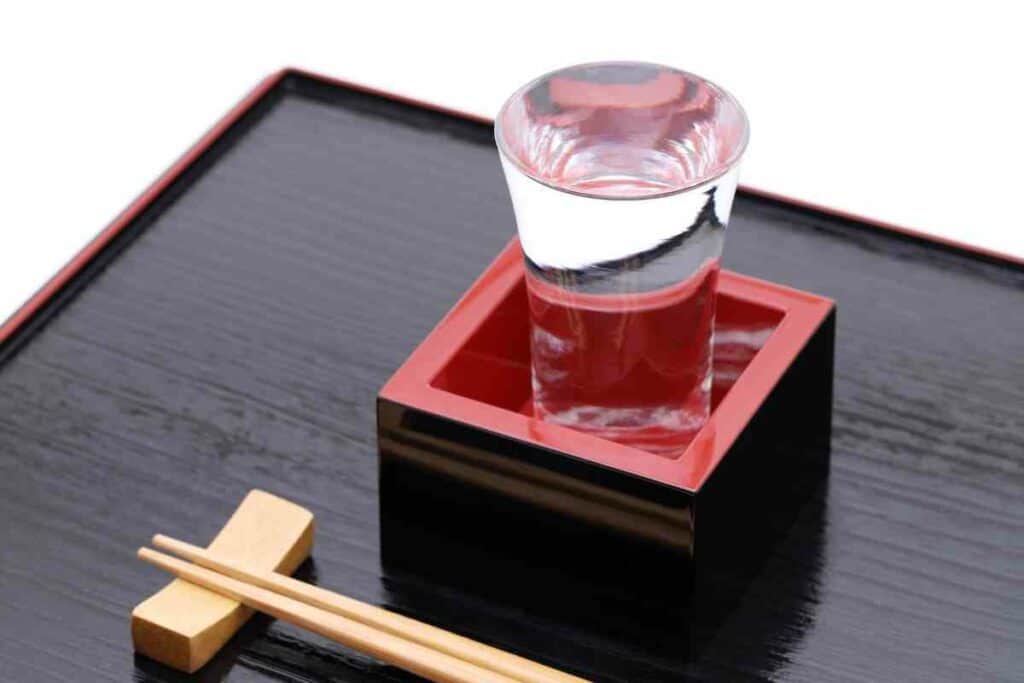
You may find yourself served with Sake in a masu as part of any big-ticket celebration in Japan, including:
- weddings
- festivals
- the new year
- and special personal events
Restaurants across the globe that serve fine Japanese cuisine may pull out the stops and serve you a masu of sake in style!
When drinking sake always let your host serve you
In Japanese etiquette, it is bad manners to pour yourself a drink.
Sake drinking is all about the host and the performance of their favor and generosity toward you. This makes the serving of Sake in a masu very easy if you are a guest.
Simply sit back and let your host pour a liberal masu-full of this delicious beverage.
You see with sake drinking, you are not offered a neatly measured amount.
Allow your host to lavish you with an overflowing masu of sake, pouring the drink until it fills the vessel and overflows.
Before a traditional toast, a host may even stack multiple masu, filling the first and letting it overflow to fill the boxes beneath.
The Japanese do not consider this wasteful. This is all about celebration and generosity.
Your sake can be served in the wooden box in one of two ways
Sake can be poured directly into the masu for a 100% traditional experience.
Alternatively, it is served in a small glass that is set inside the wooden masu as the primary drinking vessel.
You host will fill your glass to overflowing and allow it to fill the masu. When the time comes to drink, use the glass, but feel free to drain the masu too.
Here’s how its done
Over to you: drinking your sake
You can enjoy your exquisitely served sake in either glass or masu, or a combination as you dry to drink without spilling your beverage.
Enjoy the unique flavor with slow sips, as you would regular wine. You can enjoy it both cold sake and gently warmed.
To drink from the masu, hold the square masu at two opposing corners, drinking the sake with your lips on the masu just shy of the corner directly facing you.
Take in the woody aroma as you sip deeply letting the liquid linger in your mouth for a few moments before swallowing.
If you have a full glass and masu, bend your head towards the glass and sip from the top with the glass and the masu remaining on the table.
As the level of liquid goes down, use the overflow sake remaining in the masu to refill your glass.
Take it with a pinch of salt
The Japanese also serve sake with a liberal pinch of salt.
According to Japanese historians, serving sake with salt became the common thing in taverns as it was thought to draw further custom, kinda like salted Japanese peanuts at the bar making you thirsty.
This practice has persisted and if you take your sake with salt, let it lightly touch the corner of your lips as you drink from the masu.
The salt should not dominate the sake or fall into it.
Rounding up
As you can see, the wooden masu is all about the tradition and etiquette of enjoying sake.
Its a unique way to serve this beverage and it means that your host is taking good care of you.
If you are brave, you can drink the stronger traditional sake in this wooden vessel to enjoy the pungent flavor that is created.
Kanpai!
- Japanese Traditional Sweets (Wagashi): A Guide to Their Origins and Varieties
- A Taste of Japan in Every Bite – Japanese Candy & Snack Box Review
- Bubble Tea vs Boba Compared: What’s the Difference?
- Best Izakaya Foods for a Relaxed Night Out (My Top 10 Picks)
- Edo Kiriko Whiskey Glasses (Japanese Heritage in Every Pour)
- Japanese Viral Foods on Social Media (Discover the Top 10)

